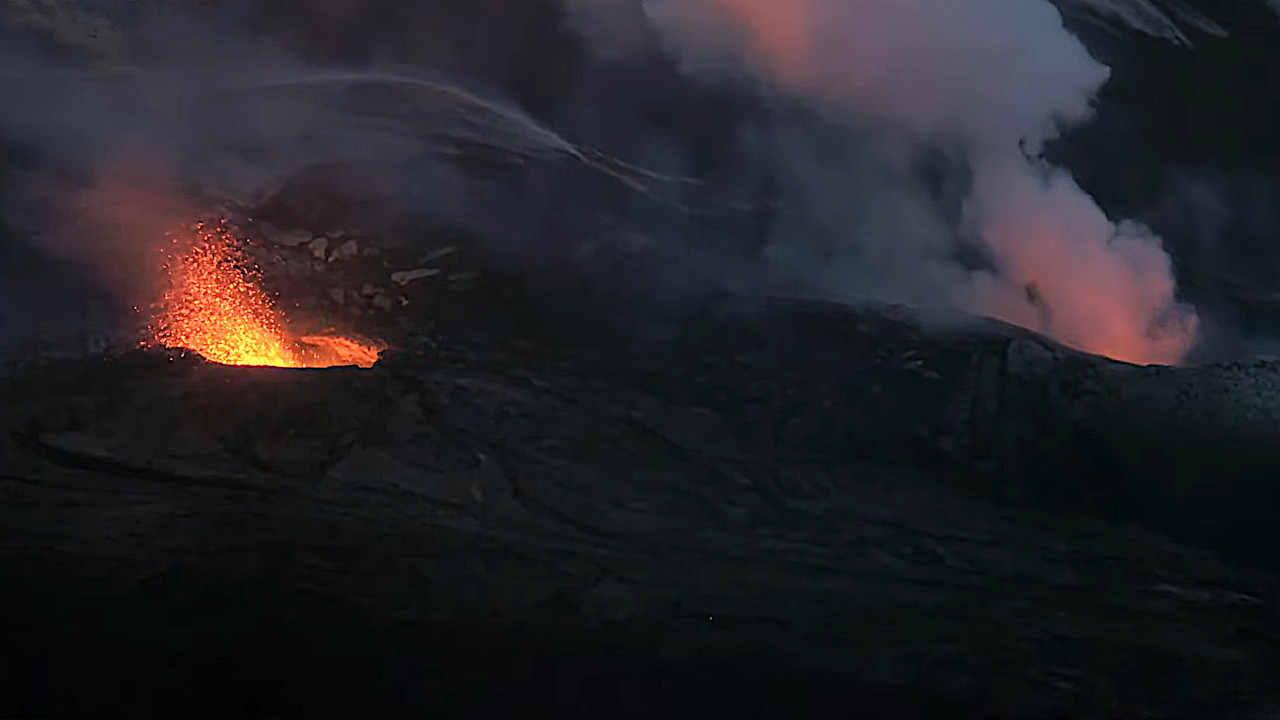(BIVN) – Kīlauea continues to slowly build towards its next eruptive episode, although a short period of deflation over the weekend has delayed the expected onset high lava fountaining at the summit.
“Periodic dome fountain overflows from the south vent ceased just after midnight last night,” the USGS Hawaiian Volcano Observatory wrote on Monday at 12:17 p.m. “No overflows have been recorded at north vent since early Saturday morning,” the scientists added.
There were two minor deflationary events at the summit on Sunday. Inflation resumed on Monday.
“We are currently in the forecast window for episode 37,” the Observatory reported on Monday. “Following yesterday’s deflation, new models forecast episode 37 to occur between November 25 and November 28, with a slight possibility through today.”
From the USGS HVO on Monday, just after noon:
Summit Observations:
Periodic dome fountain overflows from the south vent continued yesterday at a rate of approximately once per hour, with each flow lasting roughly 30-40 minutes. The last overflow ceased at 12:10 a.m. last night, replaced by strong glow and occasional spatter. North vent has continued to glow, though little spatter and no overflows have been seen since early Saturday morning. There have been 73 overflows from the summit vents since overflows began on Friday at 9:30 a.m. HST. Overflows alternated between the vents on Friday but have been largely from the south vent since Friday evening. Temporary increases in tremor were associated with lava drain back during overflow events.
Low level seismic tremor continues to be recorded from the summit, with minor tremor bursts suggesting a return to gas pistoning behavior at the vents.
Two deflationary events were recorded yesterday with a total of -0.6 microradians of deflationary tilt recorded at the Uēkahuna tiltmeter (UWD) tiltmeter. Inflation resumed at the summit upon cessation of overflows. The Sandhill (SDH) and Summercamp (SMC) tiltmeters are recording a steady climb compared to UWD, which has recorded little movement overnight.
Plumes of gas are visible from both the south and north vents. Sulfur dioxide (SO2) gas emissions increased yesterday to approximately 4000 tonnes per day during a period of deflation, but have since returned to typical eruption pause levels, between 1,200 and 1,500 tonnes per day.
Episode 36 began at approximately 11:15 a.m. HST on November 9 and ended at 4:16 p.m. HST, after erupting for 5 hours. The north vent stopped earlier, at 3:38 p.m. HST, and the south vent gradually decreased in height and volume until it stopped erupting at 4:16 p.m. HST. South vent fountains reached heights of about 1,200 feet (360 meters) and north vent fountains reached heights of about 750 feet (230 meters). Episode 36 fountains produced just under 11 million cubic yards (about 8 million cubic meters) of lava. The combined average eruption rate was over 600 cubic yards per second (500 cubic meters per second) from the dual fountains. Lava flows from the fountains covered about 80 percent of the floor of Halemaʻumaʻu crater. The Uēkahuna tiltmeter (UWD) recorded 23.5 microradians of deflationary tilt during episode 36. The end of the episode was coincident with a rapid change from deflation to inflation at the summit and a decrease in seismic tremor intensity.



by Big Island Video News3:02 pm
on at
STORY SUMMARY
HAWAIʻI VOLCANOES NATIONAL PARK - After a short period of summit deflation, models forecast episode 37 to occur between November 25 and November 28.